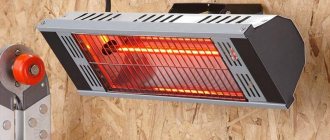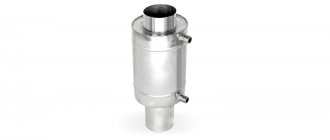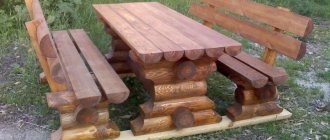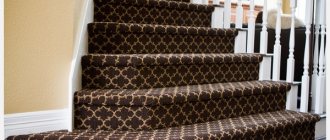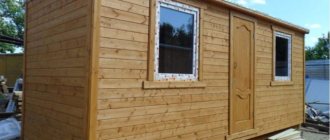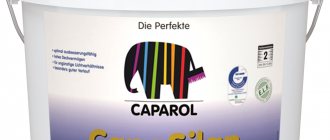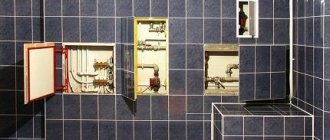The fact is obvious: a significant part of settlements or parts thereof were not affected by gasification. It is simply unprofitable to extend the highway to some areas. In addition, the built-up area of private houses and estates is constantly expanding, and the energy infrastructure does not always keep up with this growth rate. What to do if there is no gas, and heating with devices powered from the network is too expensive? Buy a solid fuel boiler and choose the right fuel for it.
Autonomy from any energy sources is the main advantage of solid fuel boilers. However, in order to make their operation efficient, it is necessary to take into account which type of fuel will be the least expensive.
The main rule when choosing solid fuel is its price at the nearest points of purchase, as well as the amount of delivery costs. More energy efficient types will lose all their appeal if they cost too much. And using cheap fuel will be unprofitable if it takes a lot of time and effort to deliver it.
There are several main types of products for solid fuel boilers, among which the owner must choose the most profitable to use.
Do you have a solid fuel boiler installed at your dacha?
Of course! No, but it will be!
Firewood
The very first type of fuel, which continues to be the most popular. Firewood is the name given to fragments of wood of a certain size intended for combustion in various devices to produce thermal energy. Most often they look like round parts of a whole trunk, but if the trees that serve as raw materials are thick, they are split into logs or logs in advance.
Firewood takes up the majority of the entire fuel market for privately owned boilers. They deserve such popular love due to a number of advantages:
. Russia is one of the countries rich in forest resources, so the price of firewood is low even in those regions where there is almost no natural forest or all of it has already been cut down. In settlements that are located near logging areas, the price is sometimes even lower due to minimal transportation costs and the opportunity to purchase fuel from the logger.
Low cost- Environmental friendliness . Unlike oil, coal and gas, wood is a renewable natural resource. After a certain time, new trees fill the old clearings. With a competent approach to forestry, it is possible to achieve no loss of forest areas.
- Ease of storage and preparation . The only thing you need to protect firewood from is moisture. To do this, it is enough to construct simple sheds and properly store them in a woodpile. Firewood is unable to ignite on its own without extraneous heat sources, so fire safety requirements are no different from those accepted for the household as a whole.
- Undemanding to the boiler design . Wood burns in any device. To burn them, a simple potbelly stove connected to a water tank is enough. More complex designs have high efficiency when the heat received from the firewood is used as efficiently as possible.
Perhaps this fuel has only two disadvantages, although they are quite significant:
- Due to the size and structure of firewood, it has to be prepared manually for loading into boilers. Therefore, sawing and splitting are necessary preliminary procedures for operating a wood-fired boiler. In this regard, automatic supply of firewood is difficult.
- The heat generation of natural wood is less than that of competitive raw materials that have undergone processing stages. It's all about the high level of natural humidity. Part of the heat is spent on evaporation of the liquid.
To purchase the dryest firewood possible, try to buy wood in late winter or early spring. They will sell you a fresh cut, where the juice has gone as deep as possible. During the summer and autumn, this firewood must be aged, so that by the next heating season it will dry out properly.
The calorific value of ideally dry wood is about 5 kWh/kg. However, in real conditions, such an indicator can only be obtained in special drying ovens - such firewood is much more expensive. The calorific value of most hardwoods is 4.2 – 4.3 kWh/kg.
When choosing firewood as fuel, it is worth remembering the following:
- Hardwood firewood burns better than coniferous wood. This occurs due to the greater amount of moisture in pine and spruce logs. But coniferous logs are easier to split into logs.
- Beech and oak are well suited for long-burning boilers as they emit little soot and contain little moisture. However, they are difficult to split.
- When firing a boiler with wood, it will require regular – at least once a year before the heating season – cleaning of soot and soot, which impair heat transfer.
- The “hottest” firewood is dry birch, as well as white acacia, common in the south.
Advantages and disadvantages
Solid fuel is the most common source of heat used in private homes in many regions of different countries. It is so popular due to its advantages:
- economy
. In most regions of Russia, the most accessible source of heating is solid fuel. Only using natural gas can be cheaper, but connecting to gas is not possible everywhere; - autonomy
. It is possible to design and create an independent solid fuel heating system. This is especially true when there are no large settlements near your home, and the number and availability of communication channels leave much to be desired. Also, solid fuel boilers can be used as a backup heating source during power outages; - cosiness
. A unique atmosphere is created in a country house with a stove or solid fuel boiler. For many buyers, this is an important aspect that is taken into account when choosing a heating system.
The main disadvantage of heating structures operating on solid fuel is the high cost of automating the process or the complete impossibility of installing it in some homes. This means that the owner of a solid fuel boiler will have to constantly monitor the operation independently. Of course, you can hire a worker, but this will also be expensive. Even at the most optimal level of air humidity, the burning time of one load of solid fuel is only about 8 hours for firewood and 1 day for coal. Accordingly, you need to regularly monitor the combustion process and periodically fill the boiler manually.
Pellets
Pellet boilers are one of the most advanced solid fuel systems.
Pellets are small fuel granules that look like oblong cylinders 2–4 cm in length and about 7 mm in thickness. The raw materials for their production are waste from wood production: sawdust, wood chips, bark, as well as substandard wood, which is unsuitable for other purposes.
Expert opinion
Torsunov Pavel Maksimovich
Depending on the proximity of waste sources, pellets may also include agricultural waste - husks, dried stems, husks. Sometimes peat or coal chips are added to pellets, which increases their calorific value.
Pellets are produced by drying and pressing. When the mixture is subjected to pressure, the temperature inside it increases, lignin, a component of wood, is released, which firmly glues the particles together.
Torrefied fuel pellets are considered the most valuable fuel. They burn without oxygen, acquiring a dark color. Due to this, their heat capacity increases. In addition, they are not afraid of moisture and do not crumble over time.
Pellets have a number of advantages:
. Pellets are made not just from wood, but from production waste, which otherwise would go to a landfill or recycling incineration. The use of agricultural by-products, which are regarded as nothing more than garbage, makes pellets one of the most progressive types of solid biofuels.
Environmental friendliness and production using waste-free technology- High combustion efficiency . Thanks to the production technology, pellets contain a small amount of moisture - only 8 - 12%, while naturally dried wood will still contain 25 - 30%, and fresh wood - 50% or more water. Burning pellets produces approximately twice as much heat as burning wood. If we compare the calorific value with hydrocarbons, it is only two times less than when burning fuel oil or gas.
- Low ash content . Pellets are practically devoid of the main drawback of wood - they form a small amount of non-combustible residues, and the content of soot and soot in the smoke is reduced. The share of ash in the granules is only 3%, so boilers and chimneys when using them require less frequent cleaning.
- Good transportability . Due to relatively high mechanical strength, small size and high density, pellets are light and easy to transport. At production, they are packaged in various containers weighing up to one ton in big bags and can be delivered by any type of transport.
- Possibility of automated feeding . Due to the identical sizes of small granules, they can be fed into the boiler automatically, using special dispensers, Archimedes screws and other devices. This allows the solid fuel boiler to be endowed with a high degree of autonomy.
Unfortunately, pellets have two significant disadvantages:
- The high cost, which arises from production costs: drying, pressing, firing. Therefore, compared to other wood fuels, the cost of pellets will always be higher.
- Enterprises that produce fuel pellets are not located in all areas. Buying pellets with delivery over long distances can completely negate their economic advantages.
Pellets are most widespread in European countries, where environmental fuel is in greatest demand. The possibility of useful recycling of waste, coupled with high energy efficiency, makes it the number one solid fuel, especially since there are almost no large forest areas allowed for felling in Europe.
Rules for calculating power
In relation to solid fuel devices, the same principles apply as when calculating indicators for gas-fired boilers. The following formula is used: to heat 10 square meters of area, one kilowatt of boiler power is needed, while the ceiling height is no more than three meters.
For example, if you have to heat a building with an area of 150 square meters, you need to install a boiler with a power of 15 kW.
When determining power, the degree of thermal insulation of the room is also taken into account. If the building has a good thermal contour, a coefficient of 40 is applied. If the level of insulation is not high enough - sixty.
So, when the ceilings reach a height of 2.5 meters, with a coefficient of 40 the formula will look like this: 150 × 2.5 × 40 = 15 kW. If the coefficient is sixty, you get a different result: 150×2.5×60=22.5 kW.
In addition, if it is decided to use a solid fuel boiler not only for heating, but also to heat water, its design capacity increases by another 50%. Producing hot water will require significant boiler power.
External view of the solid fuel boiler Cooper Praktik-8 and the basic diagram of its operation. The boiler is designed for installation in rooms with an area of 40−80 m2.
Fuel briquettes
In its composition, this type of fuel is similar to pellets, but looks somewhat different: briquettes are larger and can be not only cylindrical, but also of any other regular shape. The starting raw materials are the same wood chips, sawdust, and shavings. Organic residues of plant crops grown in agriculture are also widely used.
Some types of fuel briquettes are made exclusively from dry pine needles. Perhaps this is the only option for their useful use
Fuel briquettes have the same advantages and disadvantages as pellets. The main difference still comes from the size: briquettes are not suitable for automatic loading, so they are placed in the firebox manually. Products with an aesthetic appearance have gained popularity among owners of fireplaces and decorative stoves due to the almost complete absence of smoke during combustion.
Fuel briquettes are produced in various standards:
Pini-kay
Although the company with a similar name has already closed, the introduced technology is thriving. The briquettes are dark in color and have a hexagonal shape with a central channel. Pressure during molding – up to 1100 bar + exposure to high temperature. Best characteristics and high price.
RUF
Popularly known as “bricks”. These briquettes are indeed made in the form of small parallelepipeds. Formed at pressures up to 300 bar.
Cylindrical shape
Sometimes with a longitudinal hole. Working pressure – up to 600 bar.
What to look for when choosing a boiler?
When choosing a boiler, experts recommend paying attention to several important factors:
- What power does the heating equipment have?
- What are its technical characteristics: size, number of fuel combustion chambers, performance level and others.
- Is the automatic process control system included in the package?
- Is it possible to convert the boiler to gas fuel if desired?
- How safe is a heating boiler for homes?
Example of installation and piping of a solid fuel boiler
Coal
Among various types of solid fuel, coal has the greatest heat transfer, which makes it one of the most efficient energy carriers in heating boilers.
The amount of heat released during the combustion of coal is twice as high as that for wood and is about 7.5 kWh/kg. Thus, to maintain a certain temperature of the coolant in the circuit, coal will require significantly less than other types of solid fuel.
The most efficient in terms of heat production is anthracite. It contains a minimum of moisture and impurities. However, it is very expensive and burns quickly, giving a very high temperature, which is simply not needed in heating boilers.
The advantages of coal are due to its physical and chemical properties:
- High calorific value . The main plus. With proper boiler design, a bucket of coal may well last for a day. The volume of fuel reserves purchased for the heating season is smaller, this is especially beneficial for small or densely built-up areas.
- Coal is not afraid of moisture . Although coal pits and sheds are built for storing coal, the inside of them does not need to be as dry as possible. When wet, coal retains its properties when it dries, since moisture does not penetrate inside.
- When burned, coal produces a very high temperature , which wood and its derivatives cannot produce. This allows the coolant in the circuit to be heated more efficiently with less fuel.
Unfortunately, coal is quite expensive. Even taking into account the fact that it produces more heat, there may not be any economic benefit from its use. Another thing is the location near famous coal basins. In these regions, coal is always cheaper and much easier to buy. In places of deposits, coal almost completely replaces firewood from use.
Fire safety! When dumping coal into large piles, there is a danger of spontaneous combustion. The fact is that a mineral extracted from the bowels of the earth oxidizes in the air, which leads to self-heating. When the critical point is reached, the coal ignites inside the heap - slow burning occurs.
To prevent self-ignition, coal is stored on a non-combustible substrate and poured in layers. You should also be careful when firing a boiler with coking coal, which is sometimes purchased by owners of plots located near enrichment plants. If used incorrectly, coke can produce such a high temperature that a steel and even cast iron furnace burns through, rendering the boiler inoperable.
Algorithm for calculating coal consumption
A modern type boiler can operate effectively on both hard coal and brown coal. But if you have a choice, it is better to choose high quality coal - anthracite. It is characterized by the highest thermal capacity and burns almost without a residue. However, the cost of anthracite is higher than other varieties. It is necessary to consider the price of fuel, delivery and its heat capacity, and choose the best option.
Which coal to choose for heating in a private home?
There are two ways to calculate coal consumption in a solid fuel boiler. The very first one is elementary, using a bucket. Coal is usually measured in tons, but it is unlikely that your boiler room will have scales to accurately weigh out the required dose for loading.
One bucket holds about 18 kg of coal.
Approximately, to heat a 200 m² home the following amount of angle will be required:
- In September-October, one bucket per day.
- From November to February - 10 buckets.
- In March-April there are about two buckets.
If you assume that there are 30 days in a month and add up all the values, you can find out the total number of buckets (780 buckets). In kilograms it turns out:
780 x 18 = 14040 kg
Thus, during the heating season, a coal boiler will consume a little more than 14 tons of coal to heat a 200 m² home.
The second method of calculating coal consumption in a solid fuel boiler is more scientific. Combustion of 200 g of coal will require about 1 kW of heat. For comfortable living during the heating season, approximately 50,000 kW of heat is required:
50000 x 0.2 = 10000 kg (10 tons)
Brown coal
Brown coal has always belonged to the lower class of solid fuel. It is used quite rarely in industry due to its low calorific value. It is usually less than that of dry wood and approximately corresponds to 3.5 kWh/kg. The main trump card of brown coal remains its low price. However, even under this condition, the choice of brown coal as a fuel for the boiler is justified only in those places where the corresponding deposits and processing plants are located.
Heat transfer table of all types
The energy efficiency of the listed fuel types differs. Even the same type of raw material, under changed production and storage conditions, will have different heat transfer rates. For comparison, average values are taken (see table).
| Type of fuel | Humidity, % | Calorie content, kcal/kg |
| Firewood | 20-25 | 2800-3400 |
| Coal | 12-18 | 6500-7000 |
| Brown coal | 14-22 | 3100-3600 |
| Peat | 28-30 | 2600-2800 |
| Pellets and briquettes | 6-10 | 4300-4700 |
Buffer tank (heat accumulator)
If we exclude devices operating on granular fuel, then solid fuel boilers are characterized by uneven operation; the increase and decrease in temperature in the furnace are cyclical. In order to smooth out temperature fluctuations in the heating system, a heat accumulator (buffer tank) is used. The design is a sealed tank with a heat-insulating layer, most often cylindrical in shape.
Two or more pairs of coils (heat exchangers) are embedded in this tank, through which heated coolant from the boiler enters the tank and is distributed throughout the heating system. This scheme allows excess energy at the peak of combustion to be accumulated in a heat accumulator, so that later, when the fuel burns out, heated water can be used to maintain the set temperature. You can read more about them here.
Automation
Modern solid fuel boilers are equipped with a whole range of automatic devices that minimize human participation in servicing the operating unit. The scope of automatic regulation includes the following functions:
- compliance with the temperature regime in the system;
- control of pumps in the main and auxiliary (admixture circuit) circuits;
- maintaining the set temperature of hot water supply;
- control of coolant flows using a three-way valve.
If there is an automation unit , a person only needs to set the required temperature and load fuel, then the combustion process is controlled automatically according to the specified settings by controlling the supply of oxygen to the firebox . If heating is carried out using a pellet unit, then the fuel is loaded automatically.
Operating principle of three-way valve
If there is a three-way valve, the system works on the principle of mixing hot water from the boiler into the main flow when the temperature drops below the set one. This principle allows you to heat only the required amount of water. It can be supplied either directly from the boiler or from a buffer tank. At the same time, it can be heated by alternative sources, for example, a solar collector.
No. 3. Heat exchanger material
There are few options here. Heat exchangers can be:
- steel;
- cast iron.
It is difficult to say unequivocally which solid fuel boiler is better to choose - it all depends on the budget, operating conditions and personal requirements. Manufacturers produce both boilers.
Cast iron heat exchangers have the following advantages:
- they are assembled from separate sections , so their transportation and installation are easier. Moreover, if one of the sections is damaged, it can be replaced , so the durability of such boilers is excellent - up to 20 years or more;
- During operation, cast iron becomes covered with a film of iron oxide. This is dry rust, which hardly progresses, protecting the rest of the material from negative effects. Cast iron is more resistant to corrosion , so you will have to clean the heat exchanger less often;
- Cast iron retains heat longer , which is a plus. The downside is that it warms up more slowly.
Among the disadvantages are heavy weight, higher fragility than steel, and poor resistance to thermal shock. With a sharp change in temperature, a cast iron heat exchanger can easily crack, so avoid getting cold water into the heat exchanger that has not yet cooled down.
The advantages of a steel heat exchanger include:
- higher strength , and since such a heat exchanger is welded in a factory and comes out in one piece, it becomes possible to manufacture combustion chambers of complex configurations , thereby increasing efficiency;
- high resistance to sudden temperature changes . Boilers with such heat exchangers, as a rule, receive more advanced automation, since the temperature can be controlled freely without fear of damaging the structure;
- not as high weight as cast iron;
- faster heating, but also faster cooling.
On the other hand, steel is more susceptible to the development of corrosion processes . Despite the resistance to temperature changes, frequent such fluctuations may cause cracks to appear at welding points. If something happens, it will be impossible to repair a steel boiler - you will have to buy a new one, therefore the durability of such structures is lower.
No. 8. Combustion chamber volume
The larger the volume of the combustion chamber, the more fuel can be loaded, and the less often you have to run to the firebox and add a new portion. In the characteristics of the boiler, it is customary to indicate such an indicator as the ratio of fuel loading volume to boiler power , measured in l/kW . Since a steel boiler, with the same power as a cast iron one, will have slightly more compact parameters, for it this ratio is 1.6-2.6 l/kW. For cast iron boilers – 1.1-1.4 l/kW. The higher this indicator, the less often you will have to run to the boiler.
Boilers with top-loading fuel usable volume , and in this case the fuel is distributed more evenly. some effort will be required to distribute the fuel evenly .
